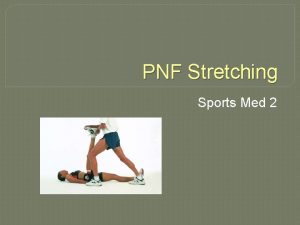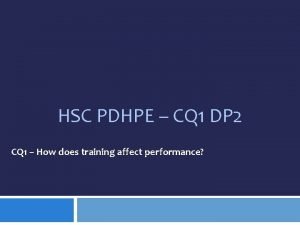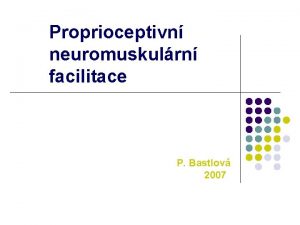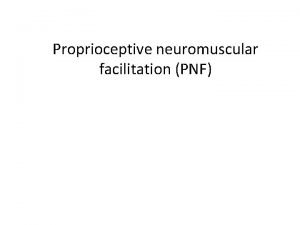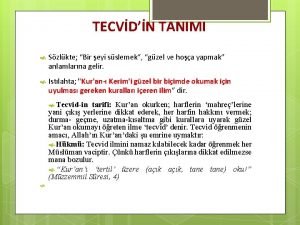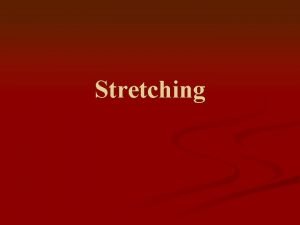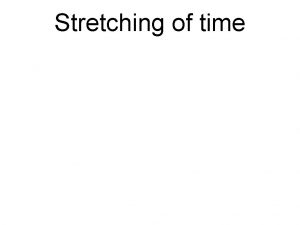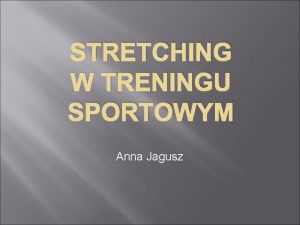PNF Stretching Sports Med 2 What is PNF






- Slides: 6

PNF Stretching Sports Med 2

What is PNF? � Proprioceptive � Neuromuscular � Facilitation � First used by physical therapists for treating patients who had various types of neuromuscular paralysis • Now used as a stretching technique to increase flexibility � Stretching techniques that involve combinations of alternating contractions and stretches � Used in rehabilitation to facilitate strength and increase ROM

ADVANTAGES � � Increase muscular flexibility Increase ROM DISADVANTAGES � � Exercises require a partner Exercises require expertise • PNF involves 3 types of Movements • Flexion/Extension • Abduction/Adduction • Internal/External Rotation

PNF stretching involves Passive & Active Stretching �Passive • The degree to which a joint may be passively moved to the endpoints in the ROM • No muscular contraction is involved �Active • The degree to which a joint can be moved by a muscle contraction

3 Specific muscle contractions are used to facilitate passive stretching �Isometric • Means to contract a muscle statically without changing its length • This contraction is referred to has “hold” �Concentric • The muscle shortens while contracting against resistance • This contraction is referred to as “contract” �Passive stretches • Referred to as “relax”

3 Basic Techniques � Hold-relax • Passive stretch – for 10 sec. • Athlete is instructed to “hold and not leg move” for 6 seconds �Athlete resists movement which creates isometric contraction • Athlete relaxes • Passive stretch held for 10 sec. • Repeat 3 times � Contract-relax • Passive stretch –hold for 10 sec • Athlete isotonically pushes against resistance from partner-6 sec • Athlete relaxes • Passive stretch applied and held for 10 sec. • Repeat 3 times � hold-relax- with contraction • Athlete moves body part to point of resistance and is told to “hold” • Muscles are isometrically resisted by partner for 6 sec. • Athlete relaxes • Athlete moves body part into farther ROM- stretch 10 secs
